You might think that eating salty snacks just makes you thirsty or puffy around the ankles after a long flight. That visible bloat, though, is only the tip of the iceberg when it comes to salt’s impact on our bodies. Salt doesn’t just hang out harmlessly in your bloodstream; it gets right to work tampering with the heart of body fluid balance—your kidneys. And the chain reaction doesn’t stop there. The moment you overdo the chips, your kidneys, hormones, and blood vessels jump into action like they’re putting out a five-alarm fire. It’s all part of a complicated, surprisingly delicate dance called sodium homeostasis. Mess with one step, and you might end up with persistent swelling, tight rings, and a pair of heavy legs—classic signs of edema.
Sodium and Water: The Tightrope Your Kidneys Walk
Let’s zero in on what your kidneys actually do all day. At the core, their biggest job is keeping the blood’s chemical makeup right where it should be. Think of them as microscopic bouncers, checking every molecule—letting some in, keeping some out. Every moment, about 25% of your blood volume gets filtered by your kidneys. That’s almost 120–150 quarts of fluid every day, but only about 1-2 quarts leave as urine. What happens to everything else? The kidneys return most of the filtered sodium and water back into the blood, keeping your body in perfect sync.
Why is sodium such a big deal? Sodium pulls water. If sodium levels are high, water goes wherever sodium goes—it’s like following your best friend at a party. So, when your kidneys hang onto sodium, your blood volume goes up. More volume equals higher pressure in the blood vessels—and you guessed it, that spells more work for your heart and sometimes swelling in your feet, hands, or elsewhere.
This isn’t just theoretical. The Framingham Heart Study—one of the longest-running studies on heart health—found that higher salt intakes directly correlated with higher blood pressures and more edema, especially in folks with already compromised heart or kidney function. People who ate more than 4 grams (about two teaspoons) of sodium a day were nearly twice as likely to develop chronic swelling compared to those who kept their intake under 2 grams.
Kidneys use microscopic channels and pumps to move sodium in and out of the urine. Normally, if you eat more salt, you just pee out the extra—but this fails if your kidneys can’t keep up or your hormones go haywire. Even in healthy people, your body takes several days to adapt to a sudden salty meal by ramping up urine output. If you eat salty over days or weeks, your kidneys adjust, but swelling can creep in if something’s out of sync.
The RAAS Pathway: When Hormones Tip the Scales
This is where the Renin-Angiotensin-Aldosterone System—RAAS—takes the stage. Most folks have never heard of it, but this hormone network is the ultimate puppeteer behind sodium balance, blood pressure, and fluid volume. Here’s how it plays out: When salt intake rises or blood pressure falls, special sensors in your kidneys release renin. Renin triggers a domino effect—converting angiotensinogen (from your liver) to angiotensin I, which then becomes angiotensin II thanks to another enzyme (ACE, made in the lungs mostly).
Angiotensin II is like a caffeine shot for your blood vessels. It causes them to squeeze tighter, raising blood pressure. At the same time, it signals the adrenal glands to release aldosterone. And what does aldosterone do? It tells the kidneys to hang onto more sodium—and wherever sodium goes, water tags along.
This whole system is meant to be a short-term fix, like saving you from dehydration by holding onto salt and water when you need it. But when you constantly eat too much salt, or if you have heart failure, kidney disease, or certain hormonal disorders, RAAS ramps up and stays stuck in the “on” position. That spells chronic sodium retention, higher blood pressure, and—a major culprit—edema.
For anyone who wants the gritty details, a quick visit to this page gives a clear breakdown of how does salt cause edema, with specific attention to how the whole retention cascade works in step-by-step fashion. It’s eye-opening how a tiny change in sodium can trigger such a massive shift in body water.
Ever wonder why your rings feel tight after Chinese takeout but not after a salad? MSG and soy sauce are sodium landmines—one tablespoon can pack nearly your entire daily sodium allotment. The RAAS pathway kicks in every time you eat something salty. If you’re sensitive or have sluggish kidneys, you might hang onto an extra pint or even quart of water overnight.
| Sodium Intake (mg/day) | Adults with Mild Edema (%) | Adults with Moderate/Severe Edema (%) |
|---|---|---|
| <1500 | 5 | 1 |
| 1500-2300 | 14 | 2 |
| 2300-4000 | 27 | 6 |
| >4000 | 49 | 12 |
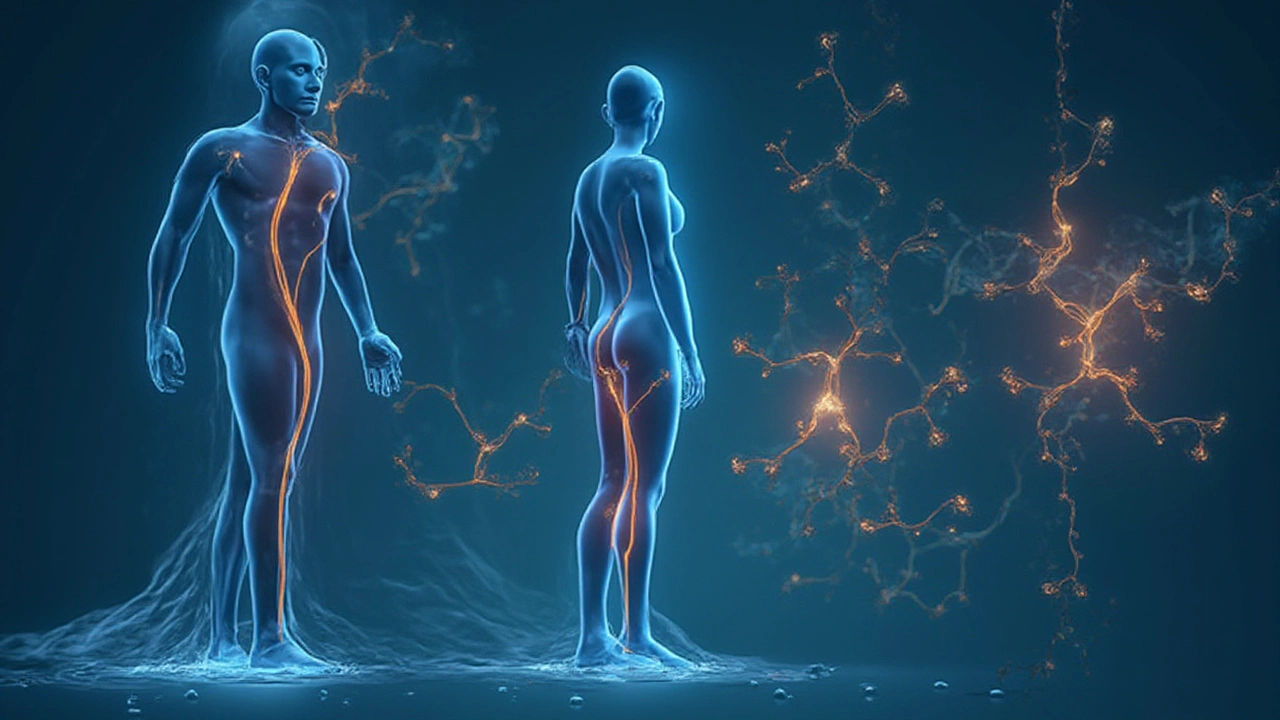
Breaking Down Sodium Balance: Why Some People Swell More Than Others
Ever notice how some people seem to balloon up after eating pizza, while others barely notice a thing? That’s because sodium handling isn’t one-size-fits-all. Genetics play a role—some kidneys are born overachievers, ridding the body of salt fast, while others are slow and sticky with the stuff. African Americans, seniors, and people with high blood pressure tend to retain more sodium and fluid, which can make edema way worse after eating salty foods.
Another wild fact: Women, especially around their periods or during pregnancy, are more sensitive to salt, thanks to hormonal swings in estrogen and progesterone. This is why expecting moms often battle swollen ankles, and why some women only notice tight shoes just before their cycle.
Certain medications—hello, NSAIDs and some blood pressure drugs—can also mess with kidney sodium handling. This means that even if you cut back on visible salt, hidden sodium in canned foods, bread, or sports drinks can quietly stoke the swelling fire. Even dehydration, oddly enough, can make your kidneys panic and start hanging onto every grain of sodium they can find, pulling water in and causing that bloated, uncomfortable feeling.
On the flipside, if you have healthy kidneys and balanced hormones, you might barely notice a difference no matter how much you binge on pretzels or ramen. But cross the threshold—if your kidneys or hormone systems are stretched thin by age, chronic disease, or medications—suddenly you’re in fluid overload territory. That’s when you notice puffy hands in the morning, deep ankle dents in your socks, or pillow marks on your face that hang around all day.
If you ever tried switching to a low-sodium diet, you’ve probably noticed a rapid drop in swelling and even a few pounds on your scale. That’s no accident—cutting sodium forces your kidneys to flush out the excess salt and water. Researchers at the Cleveland Clinic showed that heart failure patients lost up to six pounds in a week just by following a strict 1500mg/day sodium diet—without changing anything else.
Spotting, Managing, and Preventing Salt-Induced Edema
If you’re wondering whether your swelling is sodium-related, try this: Check your ankles and shins at night after sitting or standing all day, or gently press your thumb into your shin for a few seconds—if a pit lingers, you’re holding fluid. But beyond parlor tricks, tracking what you eat can give you clues. Log your sodium (yes, even the hidden stuff), track your swelling, and watch the trends.
Swelling from sodium doesn’t only happen in the hands and feet—it might show up as puffiness under the eyes, a sudden jump in weight, or rings that won’t slide off. Sometimes, especially in people with weaker hearts or damaged kidneys, fluid can gather in the lungs, turning into shortness of breath and making daily life miserable.
Cutting back on salt isn’t just a diet tip—it can be life-changing. Get in the habit of reading food labels. The average American eats over 3,400 mg of sodium per day—well above what most bodies can handle. Try swapping in spices or acid (lemon, vinegar) instead of salt. Draining canned foods, going easy on bottled sauces, and picking fresh over processed foods can whittle your sodium intake down by half without much effort.
Staying hydrated—seems counterintuitive, right? But drinking water helps your kidneys flush out excess sodium faster, especially after a salty binge. If you’re dealing with frequent swelling, ask your doctor to check your kidney function and talk through medication risks. Sometimes a water pill (diuretic) can help by encouraging the kidneys to let go of sodium, but these are not safe for everyone.
- Swap high-salt snacks for unsalted nuts or plain popcorn.
- Try the "DASH" diet—it’s proven to lower blood pressure and edema by cutting sodium.
- Use a food journal or a free app to spot sodium bombs in your meals.
- If you’re older or have high blood pressure, check your salt intake more closely.
- Pair potassium-rich foods (bananas, spinach, potatoes) with lower sodium—this can help offset some sodium’s effects.
You don’t have to give up flavor to protect your kidneys or shrink the swelling—you just have to be a little savvier about what ends up on your plate. And if you want the deep science or hands-on tips about how sodium really trips the switch for fluid bloat, you can read about how does salt cause edema straight from the experts. Stay smart, use your kidneys well—and don’t let a pile of salty chips turn into an ankle-sized puddle.


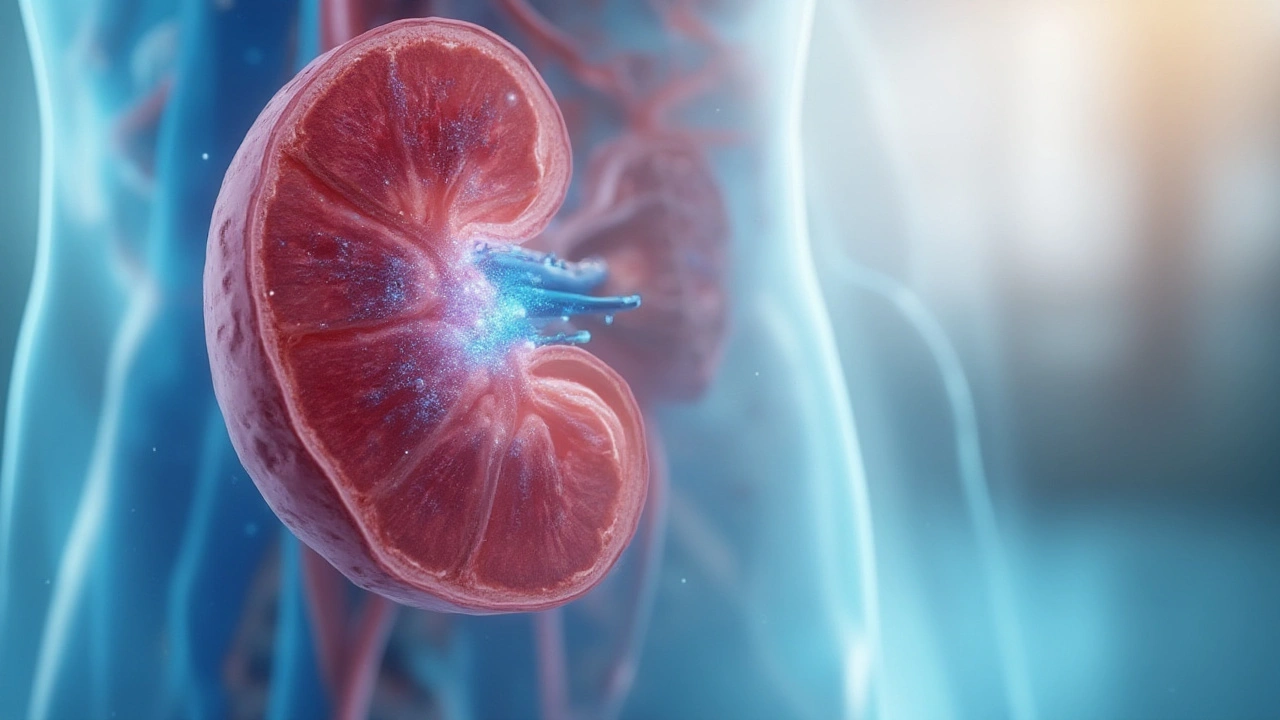
 Medications
Medications
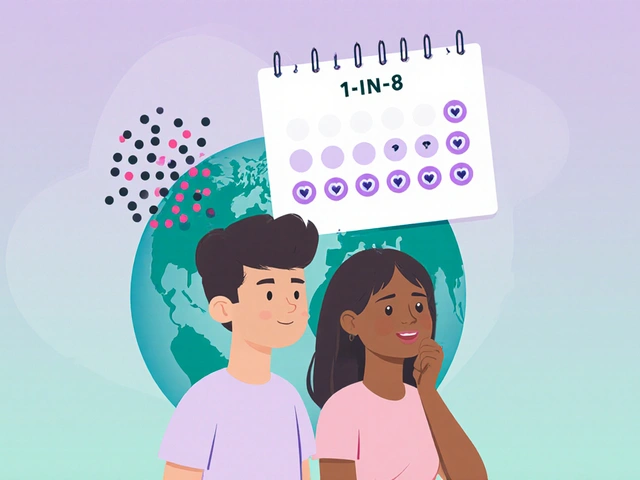
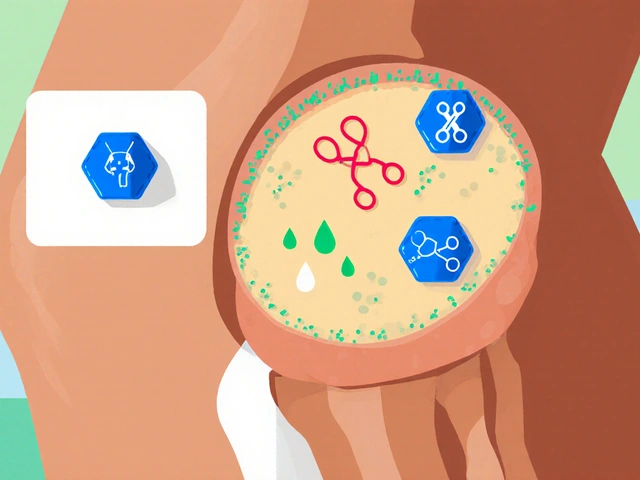

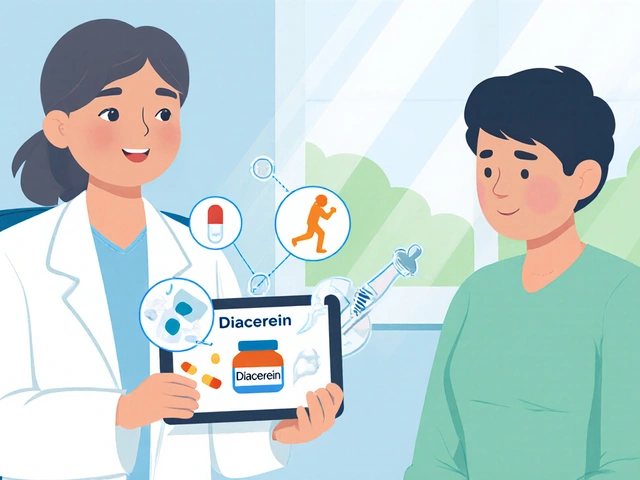

Drew Burgy
July 18, 2025 AT 13:44Ah, the age-old salting of the earth—who knew our kidneys could be so dramatic? I love how this post breaks down the RAAS system in everyday language, but honestly, it’s kind of wild that such a simple thing like salt could set off a chain reaction leading to swelling.
Seriously, it makes you wonder what the sodium lobby’s hiding because this info definitely makes you rethink that extra salty snack. The kidneys are basically the referees here, but they get totally overwhelmed with too much sodium, and boom, edema city!
Also, has anyone looked into how different diets from around the world mess with this sodium-fluid retention cycle? I bet there’s a conspiracy in how global food industries standardize salt use.
Anyway, thanks for shedding light on the science behind the puffiness. It definitely makes me want to cut back on the chips (again).
Tony Halstead
July 18, 2025 AT 13:56Absolutely fascinating! Taking complex physiological mechanisms like kidney sodium balance and RAAS activation and making them accessible is really valuable. This process explains a lot about why people experience swelling after high salt intake, tying together the systemic with the everyday.
It’s like the body’s own balancing act is being tipped by external factors we often overlook. The fluid retention just reflects how tightly regulated our internal environment is, yet how fragile that balance can be.
I appreciate the way the post clarifies things without oversimplifying. It opens the door for more mindful dietary choices and a deeper understanding of our bodies' feedback loops.
Curious if the author could expand on how chronic versus acute salt intake affects RAAS differently? That might help those dealing with long-haul issues.
Krista Evans
July 18, 2025 AT 14:18I love how this post makes such a tricky topic so approachable!
Many people don’t realize how sodium does more than just make your snacks taste better—it literally shifts the way your body holds onto water, leading to that uncomfortable bloating feeling. And knowing that behind the scenes the RAAS system kicks in to amplify this effect really helps put things in perspective.
For anyone struggling with fluid retention, this info might encourage them to rethink salt usage or consult a healthcare professional about kidney health. Remember, recognizing the root cause is the first step to managing it.
Keep sharing insights like this—it’s empowering.
Erin Knight
July 18, 2025 AT 14:38Alright, so here’s the thing from my side as the author:
I wanted to make this content digestible for folks tired of jargon while retaining enough scientific nuance. The RAAS system can be intimidating at first glance, but it’s crucial to grasp how salt actively prompts kidneys to hoard water.
Swelling isn’t just a random nuisance; it’s a direct outcome of the body’s efforts to maintain sodium balance and blood pressure. People underestimate just how dynamic and sensitive this system is.
Thanks for the thoughtful questions! I definitely plan on diving deeper into chronic versus acute impacts and maybe even how lifestyle factors like hydration and exercise play a role.
leo dwi putra
July 20, 2025 AT 14:35Man, this topic is way more dramatic than it sounds! I mean, salt causing your body to balloon up like a water balloon? That’s some real-life puffiness saga right there.
The RAAS system kicking in feels like a biochemical soap opera—like your kidneys are having a major freakout and making your body retain every drop of fluid it can.
It's kinda frustrating though because even when you try to watch salt, some days you still feel like a marshmallow. Makes me wonder if there’s more at play or if I’m just cursed with super sensitive kidneys.
So yeah, learning this definitely adds a bit of theatrics to my food choices now.
Alexia Rozendo
July 20, 2025 AT 16:36Oh look, salt is the villain again! Color me surprised. It’s almost like our addiction to salty snacks has an actual biological cost beyond just high blood pressure (which we all freak out about anyway).
I mean, the way the RAAS system flips the switch and suddenly your kidneys take on the role of hoarders is both fascinating and kind of hilarious.
Really makes me question if that extra dash of salt is worth feeling like I’ve swallowed a water balloon by the end of the day. Thanks for the breakdown, it’s like a salty saga for the body.
Kimberly Newell
July 21, 2025 AT 15:13hey hey, great post! makes me wanna brush up on some kidney stuff i kinda forgot from med school days lol.
i always heard salt was bad but didn’t know the whole RAAS drama behind it. basically our kidneys get a little neurotic and hold onto fluid like it’s the last life raft or smth.
anyone else find it wild that tiny ions can cause such monumental shifts in how our bodies feel day-to-day?
props for making this not super dense. would love more on how people can balance salt intake without feeling deprived tho.
Cassidy Strong
August 2, 2025 AT 06:23Let's get some order here. While the post does a decent job summarizing the general mechanism, there are inaccuracies worth noting.
First, the RAAS activation is not solely due to salt intake but largely due to sodium depletion or reduced renal perfusion. Salt overload generally suppresses renin release, which contradicts the premise.
Furthermore, the distinction between acute and chronic sodium loading effects on edema formation is crucial and largely unmentioned.
It's important to be precise about the pathways involved lest readers come away with misconceptions.
Still, commendable layperson approach but be wary of oversimplification compromising accuracy.
Jacob Hamblin
August 7, 2025 AT 23:53Just chiming in quietly to appreciate how clearly this was explained. Sometimes when I read about stuff like RAAS and kidney function, I feel totally overwhelmed, but this broke it down in a way that felt really manageable.
I especially liked how it connected the dots to swelling and why sodium retention can quickly become uncomfortable. It’s great when science can actually help us understand our own bodies better, without making it overly technical.
Did anyone else notice how this might relate to hydration status? I wonder how water intake affects the fluid retention in the presence of high sodium.
Suresh Pothuri
August 14, 2025 AT 22:33This topic is so crucial! People underestimate sodium’s impact because it’s invisible, but it’s the hidden puppet master behind edema.
While others debate RAAS activation, the reality is the imbalance of sodium in diet is catastrophic for kidney function and blood pressure regulation. India faces massive health burdens because of processed foods loaded with salt.
The comment about salt not activating RAAS misses the point — dysregulation of sodium handling indeed triggers compensatory mechanisms that cause fluid retention.
High salt is a national health issue, we must educate more aggressively about its dangers.
Mike Gilmer2
August 16, 2025 AT 02:20Oh man, the talk about salt and swelling just gives me anxiety. It’s like your body's throwing a full-blown tantrum, hoarding water like the apocalypse is near.
The drama of our kidneys getting all worked up over sodium, signaling RAAS like a soap opera, is pretty wild stuff. I mean, why can’t these organs just chill?
Anyone else here always feel bloated after some salty munchies, wondering if you’re part fish or just cursed? It’s the worst feeling.
Love that someone’s breaking it down though, because understanding this madness makes me wanna get my diet in check. No more salty betrayals!